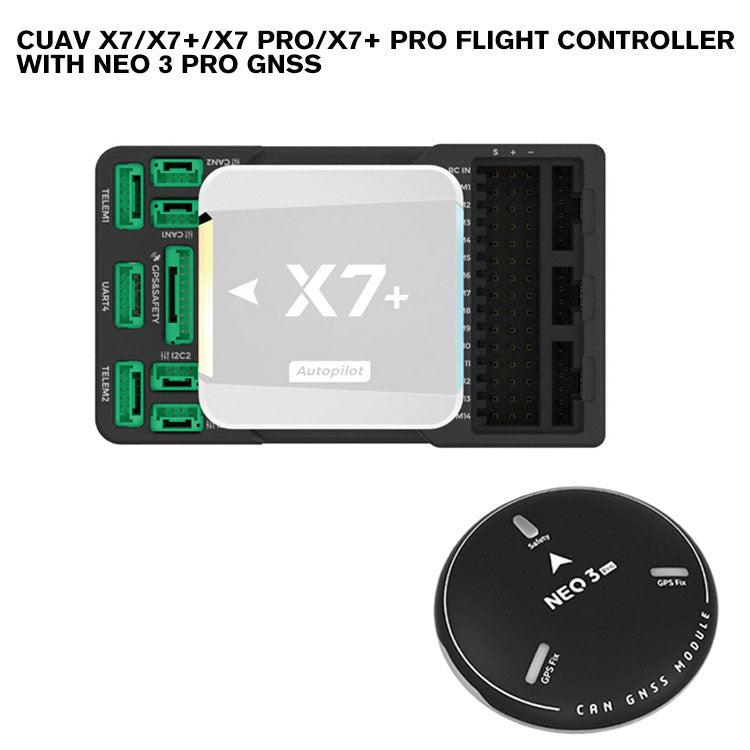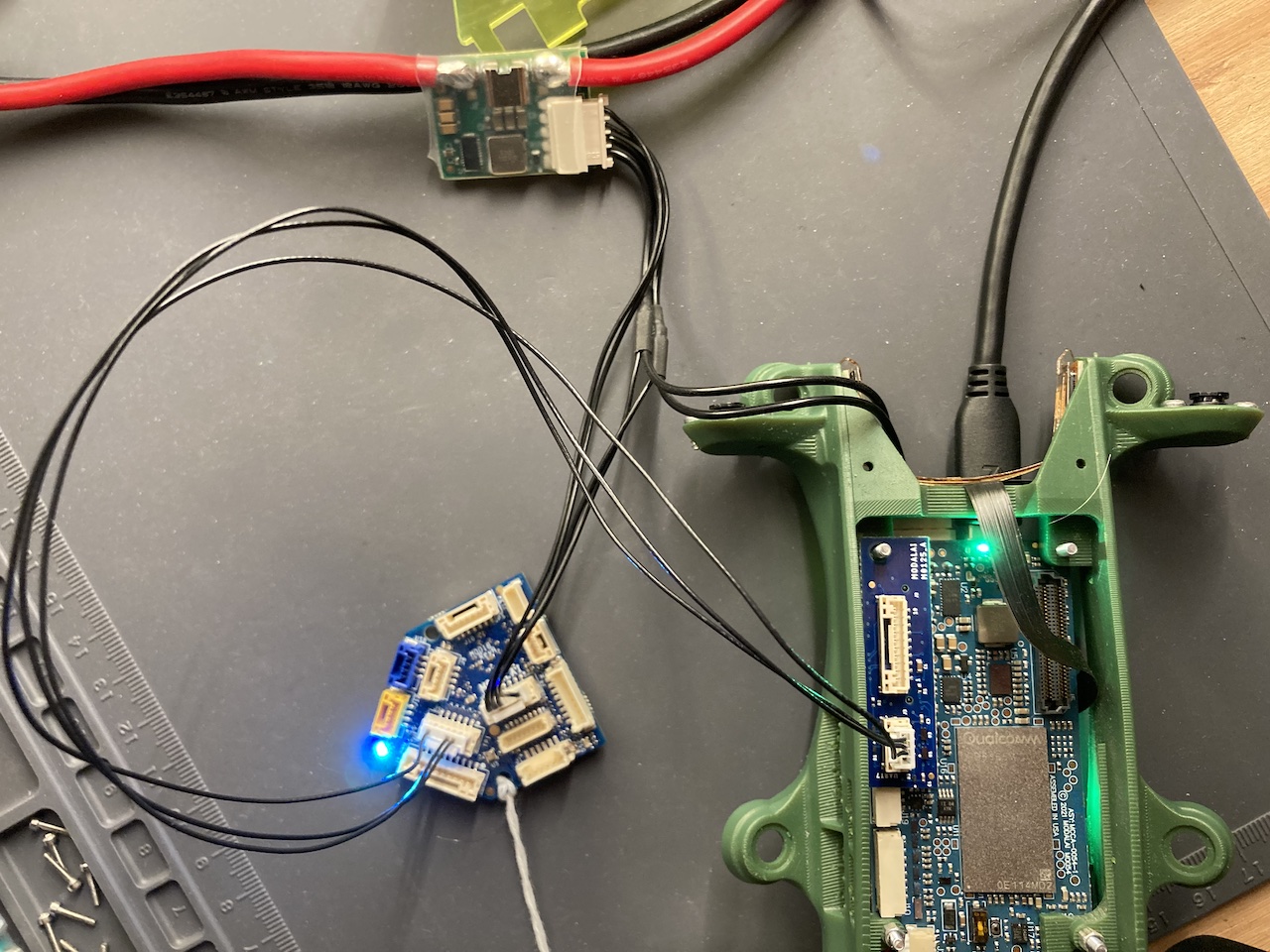SparkNavi Drone Flight Controller and GNSS/INS Made in Taiwan: Advancement for Expert UAVs
SparkNavi Drone Flight Controller and GNSS/INS Made in Taiwan: Advancement for Expert UAVs
Blog Article
Recognizing the Important Features and Features of a Drone Flight Controller for Optimum Airborne Efficiency
The flight controller offers as the essential component in a drone's style, orchestrating its movements and making certain security through an innovative interaction of sensing units and information handling. With advancements in modern technology, the landscape of flight controllers is swiftly evolving, prompting a more detailed exam of what absolutely specifies optimal performance in this critical system.
Introduction of Trip Controllers
When checking out the globe of drone technology, understanding trip controllers is crucial for both specialists and hobbyists alike. Trip controllers function as the brain of the drone, orchestrating its movements and making certain security during trip (SparkNavi drone flight controller and GNSS/INS made in taiwan). They refine information from numerous sensors, including accelerometers, gyroscopes, and barometers, to maintain balance and react to pilot inputs properly
The architecture of trip controllers can differ significantly, varying from basic versions designed for entry-level drones to advanced systems equipped with advanced features for professional applications. The integration of GPS capabilities enables accurate navigating and positioning, while programmable firmware allows users to customize trip characteristics to fit their certain requirements.
Additionally, flight controllers are crucial in promoting communication in between the drone and the remote control, allowing real-time changes and telemetry information transmission. Understanding the various sorts of trip controllers, consisting of multi-rotor, fixed-wing, and crossbreed systems, is essential for picking the suitable model for a provided application. Ultimately, a thorough grasp of flight controllers not just improves the flying experience however also makes best use of the performance and safety of drone procedures.
Trick Features of Flight Controllers
Flight controllers play a critical function in handling a drone's trip dynamics by carrying out several key functions that guarantee stability and responsiveness. One of the key features is the stabilization of the drone's alignment and elevation. This is achieved through the combination of various sensors, consisting of gyroscopes, accelerometers, and measures, which continually monitor the drone's setting and movement.
.jpg)
One more necessary feature is the processing of control inputs from the pilot or self-governing systems. The trip controller translates these inputs and changes the drone's motor rates appropriately to attain the preferred trip course. This includes managing yaw, pitch, and roll, which are critical for maneuverability.
Furthermore, trip controllers are geared up with reliable systems. These features are created to reply to essential situations, such as reduced battery degrees or loss of signal, by starting predefined activities like going back to the launch factor or hovering in place.

Essential Attributes to Think About
Various necessary features need to be taken into consideration when picking a drone flight controller to ensure optimal performance and reliability. One crucial aspect is the controller's handling power, which establishes its ability to take care of intricate flight algorithms and real-time information processing. A greater handling capability enhances responsiveness and stability during trip.
Another crucial feature is the variety of supported flight modes. A versatile flight controller must offer various modes, consisting of acro, altitude hold, and GPS-assisted modes, dealing with various pilot skill levels and functional situations. In addition, the presence of built-in safety functions, such as fail-safes and geofencing, can substantially enhance functional security.
Compatibility with different interaction protocols is also important, as it ensures smooth integration with various other gadgets and peripherals, such as remote controllers and telemetry systems. Furthermore, the controller's firmware must be user-friendly and regularly updated to integrate new functions and optimizations.
Combination With Sensing Units and Equipments
A flight controller's performance is greatly influenced by its capability to incorporate with various sensors and systems. This assimilation is crucial as it enables the flight controller to obtain real-time information needed for reliable trip monitoring. Trick sensing units include GPS, inertial dimension devices (IMUs), measures, and magnetometers, each supplying crucial info relating to the drone's setting, altitude, and alignment.

Furthermore, progressed flight controllers support combination with payload systems, consisting of cameras and various other sensing units, making it possible for improved capabilities such as autonomous navigating and barrier evasion. This interconnectedness not only improves the drone's functional capabilities but additionally increases its application prospective across numerous industries, from aerial digital photography to farming tracking. Thus, a well-integrated flight controller is essential for accomplishing ideal airborne performance and making certain the reliability of drone procedures.
Tips for Optimizing Efficiency
To maximize the efficiency of your drone, several key approaches can be utilized that emphasis on optimizing both hardware and software components. Make sure that the trip controller firmware is up to day. Manufacturers regularly release updates that enhance security, improve performance, and deal with pests. Consistently looking for these updates can significantly impact your drone's performance.
Following, calibrate your sensing units, including the accelerometer and gyroscope, to guarantee accurate readings. Proper calibration minimizes drift and improves flight stability, especially throughout complicated maneuvers. Furthermore, consider updating the equipment elements, such as propellers and motors, to enhance thrust and read review performance. Top notch propellers can decrease drag and boost flight time.
In addition, enhance your drone's weight by reducing unnecessary payloads. A lighter drone not just carries out better however likewise prolongs battery life. Ultimately, fine-tune your flight settings, including PID (Proportional, Indispensable, Acquired) values, to attain responsive and smooth handling. By carrying out these methods, drone drivers can substantially enhance aerial efficiency, resulting in an extra reliable and enjoyable flying experience.
Conclusion
To conclude, a complete understanding of drone flight controllers is crucial for enhancing aerial efficiency. The assimilation of key features and crucial functions, including processing power and safety devices, straight influences the stability and ability to move of drones. In addition, efficient interaction with various sensing units and systems plays an important duty see in accomplishing accurate navigating and operational efficiency. By prioritizing these elements, operators can considerably raise the performance and dependability of their drone systems in diverse applications.
Trip controllers serve as the brain of the drone, coordinating its movements and guaranteeing security throughout trip.Trip controllers play a crucial duty in handling a drone's trip characteristics by performing numerous vital functions that ensure security and responsiveness. The flight controller interprets these inputs and readjusts the drone's motor rates accordingly to achieve the desired flight course.Various important attributes ought to be taken right into account when selecting a drone trip controller to guarantee ideal performance and reliability. Thus, a well-integrated flight see this website controller is essential for achieving optimal airborne efficiency and ensuring the integrity of drone operations.
Report this page